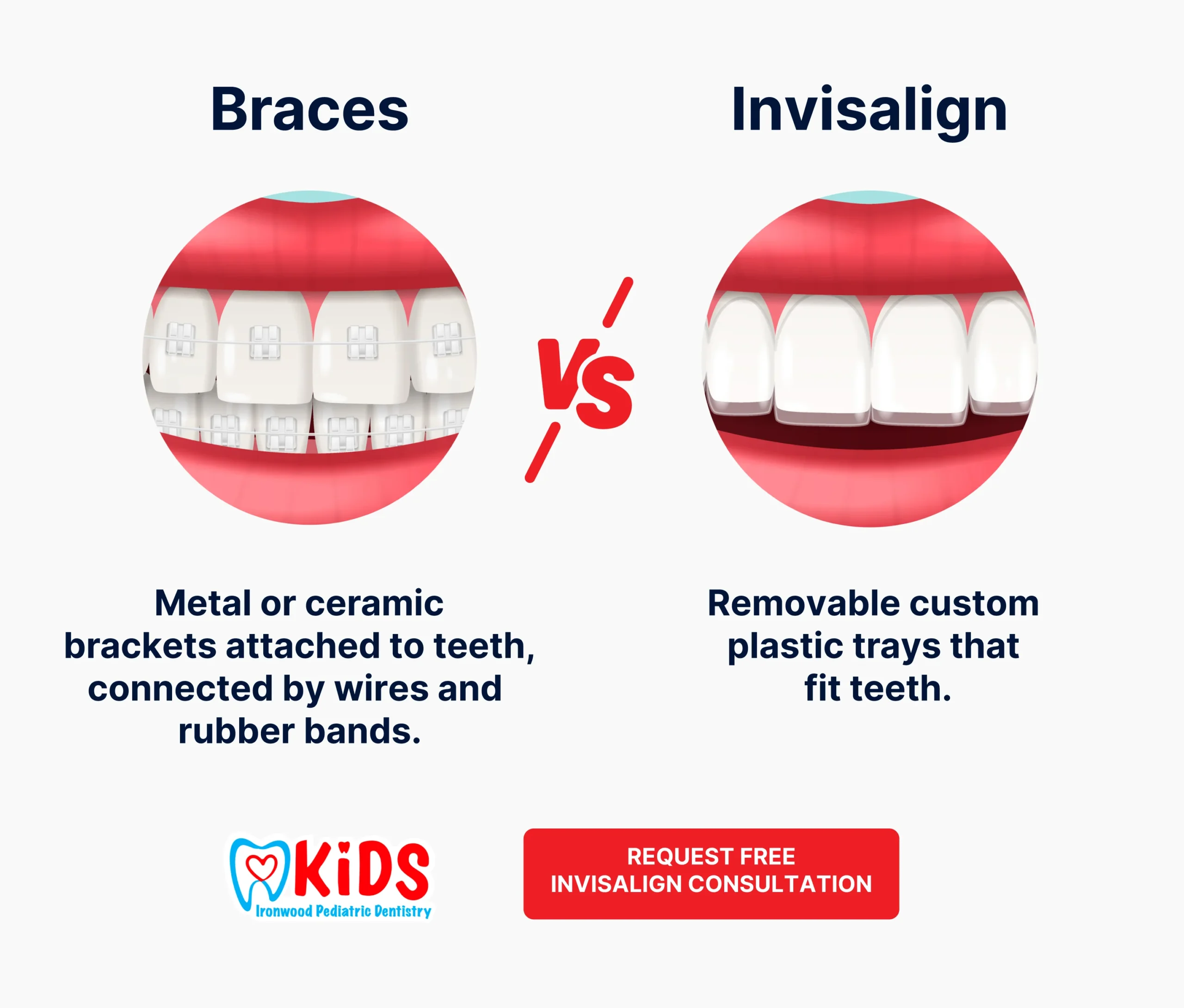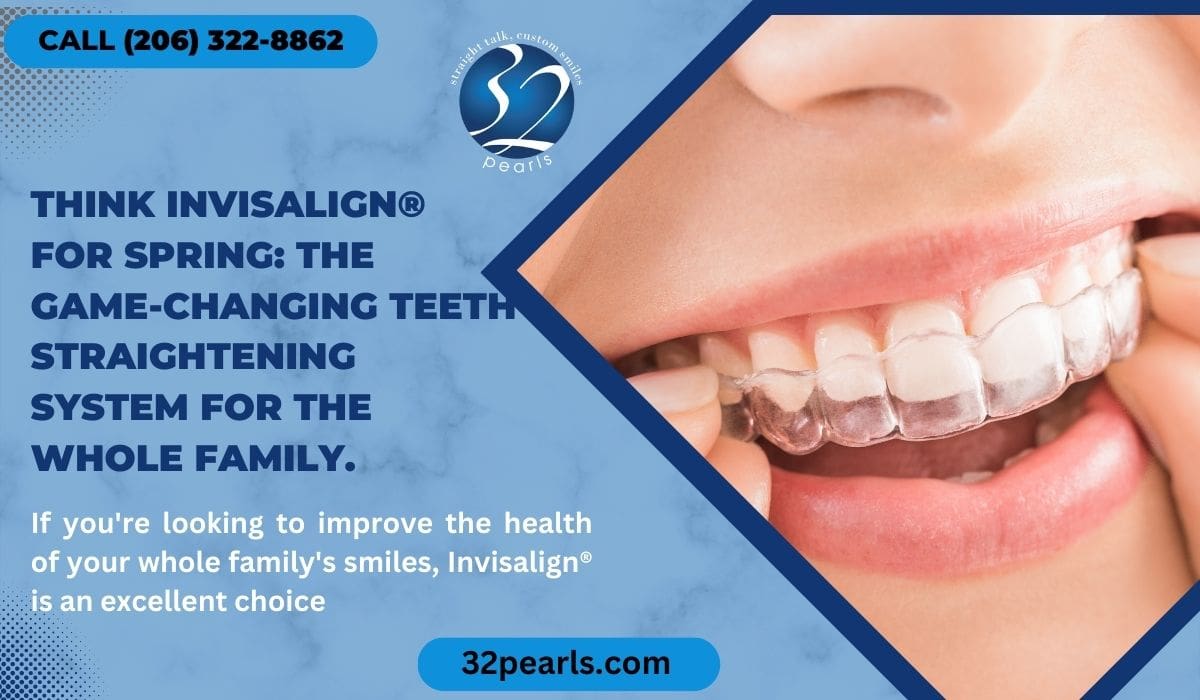Keeping Oral Health While Using Invisalign: Tips for a Smooth Experience
Keeping Oral Health While Using Invisalign: Tips for a Smooth Experience
Blog Article
Invisalign vs. Typical Braces: Which Choice Is Right for You?
When taking into consideration orthodontic treatment, the choice in between Invisalign and conventional braces provides numerous important elements that merit mindful examination. Invisalign supplies a very discreet alternative with removable aligners, while conventional braces give a much more visible yet efficient option for extreme imbalance. Each option incorporates distinctive advantages and downsides related to aesthetics, comfort, therapy duration, and cost. Understanding these nuances is critical for making an informed decision that lines up with your individual choices and way of living. The inquiry continues to be: which alternative will ideal meet your orthodontic requirements and expectations?
Review of Therapy Options

On the other hand, traditional braces contain steel brackets and cables that are adhered to the teeth. This method applies continual pressure with time to achieve placement. While effective for complicated orthodontic concerns, traditional dental braces require routine sees for adjustments and can position difficulties in keeping oral health due to the problem of cleansing about brackets and cables.
Both choices have their advantages, and the choice typically pivots on particular dental problems, way of life preferences, and client conformity. Inevitably, seeking advice from an orthodontic professional is important for identifying one of the most ideal therapy plan customized to private needs. Comprehending the nuances of each option can considerably affect the overall success of orthodontic treatment.
Visual Factors To Consider
A significant element influencing the option in between Invisalign and standard braces is the aesthetic appeal each therapy supplies. Invisalign aligners are crafted from clear plastic, making them virtually unnoticeable when worn. This discreet look is specifically attracting adults and teenagers that might feel uncomfortable about their orthodontic treatment. The ability to preserve a natural smile throughout the alignment process can significantly enhance the person's self-confidence in professional and social settings.
In comparison, typical braces contain steel brackets and wires, which can be more obvious. While innovations in orthodontic modern technology have resulted in the development of smaller sized brackets and colored elastics, standard braces still preserve a more obvious account. For some people, the exposure of braces might hinder them from looking for required therapy.
Inevitably, the choice in between Invisalign and standard dental braces may depend upon personal preferences pertaining to aesthetics. Individuals that prioritize discretion usually favor Invisalign, while those that are less concerned regarding presence might select standard braces. Understanding the aesthetic implications of each choice is crucial for making a notified choice that aligns with one's lifestyle and preferences.
Convenience and Convenience

In regards to ease, Invisalign aligners are removable, allowing people to appreciate their preferred foods without constraint and keep ideal oral health. Cleaning and flossing are simplified, as the aligners can be taken out during these regimens, whereas typical dental braces require cautious steering around cables and braces.
Additionally, Invisalign's progressive system allows for less orthodontic visits. Patients generally receive multiple collections of aligners at once, which can simplify the therapy procedure and decrease time spent in the orthodontist's chair. In comparison, traditional dental braces demand routine adjustments, making them much less convenient for those with active timetables. Invisalign. Generally, the comfort and ease of Invisalign make it an enticing option for lots of people seeking orthodontic treatment.
Therapy Duration and Efficiency
While both Invisalign and traditional braces are efficient in dealing with dental imbalances, the period of treatment can vary considerably in between the two choices. Normally, Invisalign therapy can take anywhere from 12 to 18 months, relying on the intricacy of the situation. The clear aligners function by gradually shifting teeth into their wanted placements, and regular follow-ups with an orthodontist assistance make sure development continues to be on the right track.
In contrast, conventional braces typically need a longer dedication, usually click here to read ranging from 18 months to 3 years. This is because of their set nature and the usage of braces and cables, which can be much more efficient for complex situations and severe imbalances (Invisalign). The therapy effectiveness of conventional braces is well-documented, as they enable exact changes and greater control over tooth motion
Inevitably, the selection in between Invisalign and traditional dental braces may depend upon both the expected therapy duration and the particular dental concerns available. Consulting with an orthodontist is crucial, as they can offer tailored referrals based on individual needs, making certain the picked approach straightens with desired results and timeframes.
Cost Contrast and Insurance Coverage Options
Price plays a considerable function in the decision-making procedure for people thinking about orthodontic therapy, whether choosing for Invisalign or traditional dental braces. On standard, the cost of Invisalign arrays from $3,000 to $8,000, while standard dental braces typically cost in between $2,000 and $6,000. Aspects influencing these prices include the intricacy of the case, the duration of therapy, and geographical area.
Many dental insurance coverage plans provide partial coverage for orthodontic treatments, yet the specifics can differ extensively. Typically, traditional dental braces might be extra regularly covered by insurance coverage strategies contrasted to Invisalign, which some insurance providers classify as a cosmetic treatment.
In addition, numerous orthodontic methods supply adaptable layaway plan, making both therapy options more obtainable. Patients need to ask about possible financing options and discount rates for in advance settlements. Evaluating the complete cost, consisting of insurance policy advantages and settlement strategies, is necessary for making an educated choice that aligns with both visual choices and budget plan factors to consider.

Verdict
In summary, the selection between Invisalign and conventional braces pivots on numerous variables, including visual choices, convenience, therapy period, and expense. Invisalign supplies a very discreet, detachable right here option that assists in dental hygiene and nutritional flexibility, while conventional braces may be preferable for complex dental concerns and frequently come with a lower cost factor. Inevitably, consultation with an orthodontist is necessary to assess specific situations and establish the most proper treatment alternative for achieving optimum oral placement.
When thinking about orthodontic treatment, the option in between Invisalign and standard dental braces presents a number of vital aspects visit this site that warrant mindful evaluation.Contrasting Invisalign and conventional dental braces discloses distinctive treatment choices for orthodontic adjustment.While both Invisalign and traditional dental braces are effective in fixing oral misalignments, the period of therapy can vary significantly in between the 2 choices.Cost plays a considerable role in the decision-making process for individuals considering orthodontic treatment, whether deciding for Invisalign or standard braces.In summary, the selection between Invisalign and traditional dental braces hinges on several elements, consisting of visual preferences, convenience, treatment duration, and cost.
Report this page